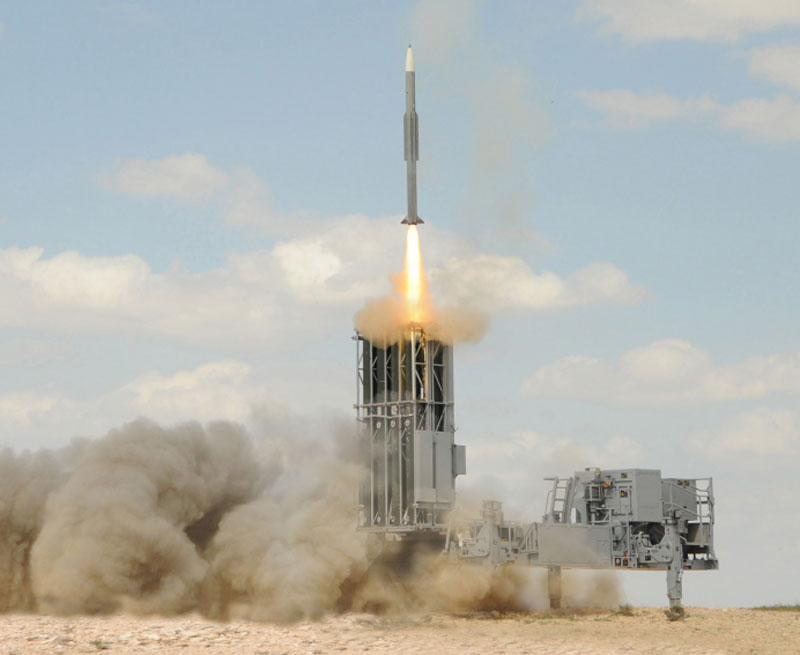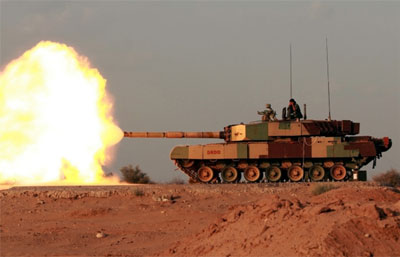Lessons Galore
 Maj. Gen. (Dr) R.S. Mann (retd)
Maj. Gen. (Dr) R.S. Mann (retd)
India’s quest for self-reliance in military hardware has been underway for more than three decades now. While numerous committees have been formed over the years to examine the issue and recommend the way forward and incremental measures have been introduced from time to time, it is only recently that the ministry of defence (MoD) is in mission mode to achieve a transformation in the Indian military industrial complex.
The adverse effects of the Russia-Ukraine war on the delivery of equipment and spares from Russia, has highlighted the urgency of this transformation, especially in light of the tensions on our northern borders. Towards this end, various measures have been implemented, primarily by way of procurement policies focused on indigenous products, discouragement of imports, rationalisation of tax structures to provide a level playing field to all players private or public, encouragement of exports, incentives for SMEs/ MSMEs, funding for defence innovations, streamlining of acquisition procedures including defence offsets, to name a few. The key agent for these changes has been the defence acquisition procedure 2020 (DAP 2020). It is however appropriate at this stage to assess the adequacy of these measures and identify what more can be done.
Many nations have developed their defence industrial bases to global standards. To draw lessons from these endeavours, I intend to examine the experience of different nations since World War I, as the challenges and pathways essentially remain the same. Thus, I examine in this article the case of Germany post-World War I, the Soviet Union post-World War II, and more recently, Israel, China and South Korea.
Germany
After World War I ended in November 1918 with its defeat, Germany was severely restricted in terms of military production and was forced to disarm under the terms of the Treaty of Versailles. However, with Hitler’s rise in the late 1920s, the German government began to secretly build up its military capabilities, despite the restrictions placed upon it. Thus, in less than 10 years, Germany developed its armed forces into the most formidable war machine in Europe, fielding the best tanks, fighters, naval ships and submarines and artillery guns amongst the adversaries, and in large numbers. They developed the first V2 liquid propelled rocket which was used effectively in the battle of Britian. Here are some key factors that contributed to the rapid rejuvenation of the German military industry:
Strategic Planning: The Nazi government recognised the importance of scientific and technological development for building a strong military. It implemented policies such as centralised research institutions and funding for military-related research to attract talented scientists and engineers.
An essential element that enabled Germany to develop its military industry so rapidly, was the establishment of the German war ministry’s weapons office (Heereswaffenamt) in 1922. This organisation was responsible for overseeing the development and production of military equipment and weapons. It employed many experienced engineers and scientists who had previously worked on military projects during World War I and paid them handsomely. Just to give a perspective, Germany manufactured 4,733 fighters and 3,562 other aircrafts in 1939. Monthly production of tanks peaked at 5,964 tanks by 1945.

IAI’s Barak missile
Industrial Infrastructure: To build the industrial infrastructure necessary for producing military equipment, the Nazi government used a combination of government control and private enterprise. Germany underwent a significant industrialisation process during the 1930s, which enabled the country to produce large amounts of armaments and military equipment. The government invested heavily in military-related industries, such as steel production and armaments manufacturing. It established state-owned enterprises and took over existing industries, giving the government greater control over production and allocation of resources. The Nazis also implemented a series of economic policies that increased efficiency and productivity in the German economy, allowing for greater output from the military industry.
Raw Materials: To obtain the raw materials necessary for manufacturing military equipment in such large numbers, the Nazi government implemented policies such as import substitution, where domestic production was increased to replace imported goods. The government also seized control of resource-rich territories, such as Austria and Czechoslovakia, which provided access to key resources such as coal and iron.
Technological Advancements: Given adequate resources and incentives, German engineers and scientists made significant advancements in military technology, such as the development of the Messerschmitt Bf 109 fighter plane and the Tiger tank, which gave the German military a technological advantage over their opponents.
Government Incentives: The Nazi government offered significant financial incentives to scientists and engineers who were willing to work on military-related research projects. These incentives included high salaries, generous research budgets, and access to state-of-the-art research facilities.
Collaboration with Industry: The Nazi government worked closely with the private sector, particularly in the arms industry, to develop new military technology. This collaboration provided scientists and engineers with access to cutting-edge research facilities and equipment, as well as opportunities for collaboration with other experts in their field.
Brain Gain: The Nazi government also took advantage of the political situation in Europe during the 1930s to attract scientists and engineers who were fleeing persecution in other countries. Many of these refugees were highly skilled and experienced, and their expertise was instrumental in the development of new military technology.
In summary, the Nazi government used a combination of strategic planning, government incentives, propaganda, collaboration with industry, and exploitation of the political situation to attract and retain scientists and engineers to develop new technology in arms after World War I. These efforts were instrumental in the rapid development of new military technology, which contributed to Germany’s military strength in the lead-up to World War II.
The Soviet Union
After the end of World War II, the Soviet Union focused on rebuilding and expanding its military industry to ensure its security and maintain its status as a world superpower. Given below are some key factors that contributed to the Soviet Union’s buildup of its military industry after World War II.
Government Incentives: The Soviet government offered significant financial incentives to scientists and engineers who were willing to work on military-related research projects. These incentives included high salaries, generous research budgets, and access to state-of-the-art research facilities.
Centralised Planning and Manufacture: The Soviet government implemented centralised planning, which allowed it to direct resources towards military-related research and development. They also established large state-run arms manufacturing complexes. This approach ensured that the country’s limited resources were used efficiently and effectively, and that research efforts were focused on key priorities.
State-Controlled Research Institutions: The Soviet government established state-controlled research institutions, such as the Institute of Atomic Energy and the Institute of Nuclear Physics, which provided scientists and engineers with access to cutting-edge research facilities and equipment. These institutions were also tasked with developing new military technology, which helped to attract and retain talented researchers.
Human Resource: The Soviet Union brought in qualified scientists and engineers from outside to develop military technology after World War II. One of the most famous examples of this was the Soviet Union’s recruitment of German scientists and engineers, who were brought to the Soviet Union as part of Operation Osoaviakhim after World War II, under direction of Soviet intelligence agencies. They used a combination of incentives and coercion to recruit German scientists and engineers.
more

Indigenous Arjun tank relies too much on imported components
The German scientists and engineers who were recruited were offered attractive salaries, housing, and other incentives, as well as the promise of protection from prosecution for war crimes. These German scientists and engineers were instrumental in the development of rocket technology, jet engines, and other advanced weapons systems. In addition to recruiting German scientists and engineers, the Soviet Union also brought in experts from other countries to work on military-related projects. For example, the Soviet Union recruited nuclear physicists from the United States and other countries to work on the country’s
Subscribe To Force
Fuel Fearless Journalism with Your Yearly Subscription
SUBSCRIBE NOW
We don’t tell you how to do your job…
But we put the environment in which you do your job in perspective, so that when you step out you do so with the complete picture.








